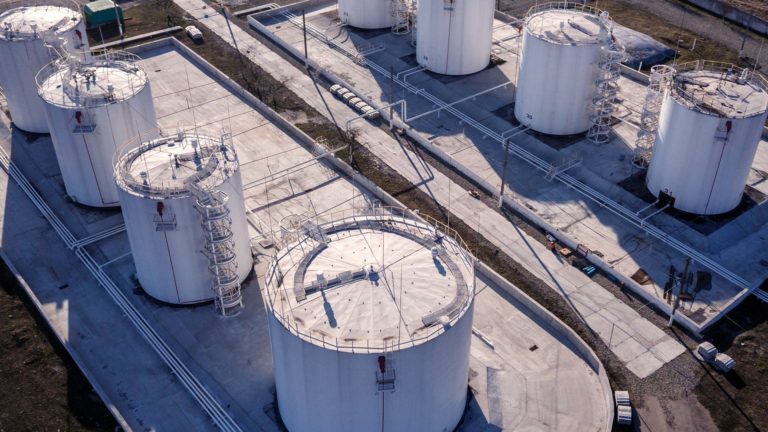The Important Role of Container Welding Examination in Ensuring Structural Stability and Security Conformity in Industrial Applications
In the realm of commercial applications, container welding inspection emerges as an essential element in protecting architectural honesty and guaranteeing compliance with safety and security guidelines. Making use of a combination of methods such as visual assessments and advanced screening approaches, these inspections offer to recognize and mitigate prospective imperfections prior to they rise into significant risks.
Importance of Storage Tank Welding Assessment

Guaranteeing compliance with industry standards and laws is an additional substantial element of tank welding inspection. Governing bodies mandate stringent guidelines for the construction and upkeep of storage containers, and detailed examinations assist organizations stick to these demands. Non-compliance can result in severe fines, including fines and closures, additionally emphasizing the demand for extensive assessment protocols.
Furthermore, storage tank welding assessment plays an important role in maintaining functional efficiency. In recap, the relevance of storage tank welding inspection exists in its ability to safeguard public wellness, safeguard the setting, and make certain compliance with regulatory frameworks.
Secret Examination Techniques
Efficient storage tank welding evaluation counts on a selection of vital techniques that ensure comprehensive analysis of weld top quality and architectural stability. Amongst the most common strategies are aesthetic examination, ultrasonic screening, radiographic screening, and magnetic fragment screening - Tank Welding Inspection. Each technique supplies special benefits in analyzing various facets of the weld
Aesthetic assessment offers as the very first line of defense, allowing inspectors to identify surface flaws, abnormalities, or variances in the weld bead. Ultrasonic testing uses high-frequency sound waves to spot internal flaws, such as splits or spaces, offering a comprehensive assessment of weld honesty. This technique is especially effective in discovering concerns that might not be visible externally.
Radiographic screening uses X-rays or gamma rays to produce photos of the welds, exposing interior discontinuities and giving a long-term record for future referral. This method is highly efficient for critical applications where the danger of failure have to be lessened.
Lastly, magnetic fragment testing is employed to determine surface area and near-surface defects in ferromagnetic products. By using electromagnetic fields and fine iron bits, inspectors can determine gaps that might compromise the structural honesty of the tank. With each other, web these methods form a durable structure for making certain top notch welds in industrial applications.
Compliance With Safety Requirements

Regular assessments play a crucial role in guaranteeing compliance by identifying prospective failures or discrepancies from recommended requirements. Examiners are trained to assess weld high quality, validate product specs, and examine the overall structural stability of storage tanks. Their proficiency is important in making sure that welding processes meet the required safety standards.
In addition, conformity with security requirements not only protects employees however also safeguards the setting from possible hazards such as leaks or devastating failures. Organizations that prioritize safety conformity are much better positioned to reduce threats, boost operational performance, and promote a society of security within their workforce. In recap, preserving strenuous compliance with safety standards is indispensable for the effective procedure of tank welding activities in commercial settings.
Benefits of Routine Inspections
Routine examinations are indispensable to preserving the structural honesty and security of welded containers. These evaluations give a methodical strategy to determining potential flaws or weaknesses in the welds, ensuring that any type of issues are resolved before they rise into considerable failings. By carrying out regular evaluations, organizations can find rust, exhaustion, and other types of deterioration that may jeopardize tank efficiency.
Furthermore, regular evaluations contribute to conformity with sector laws and criteria. Abiding by these guidelines not just mitigates legal dangers however also boosts the organization's online reputation for security and integrity. Regular assessments promote an aggressive safety and security culture, motivating employees to acknowledge and focus on the relevance of equipment stability.

Study and Real-World Applications
Situation researches and real-world applications show the substantial effect of effective container welding evaluation techniques. Complying with the implementation of extensive welding examination protocols, consisting of visual and ultrasonic screening, the facility recognized vital flaws in weld joints that can have led to disastrous failures.
Likewise, a water therapy plant implemented a detailed examination program for its tank welding operations - Tank Welding Inspection. By including non-destructive testing techniques, the plant had the ability to find very early signs of rust and exhaustion in weld joints. This timely treatment extended the life-span of the storage tanks and made certain compliance with safety and security laws, thus securing public health
These instance studies emphasize the importance of normal and systematic storage tank welding inspections. By prioritizing these practices, markets can mitigate risks, enhance structural honesty, and make sure compliance with security standards, eventually causing boosted operational efficiency and lowered liabilities.

Verdict
Finally, container welding evaluation is an indispensable element of preserving architectural honesty and safety in industrial applications. Utilizing numerous examination strategies makes certain very early discovery of possible imperfections, thereby avoiding look at this site disastrous failings. Adherence to security criteria better improves operational reliability and compliance with regulatory requirements. Eventually, routine evaluations not only secure public wellness and the atmosphere but also add to the durability and efficiency of critical properties, emphasizing the essential duty of this technique in commercial operations.